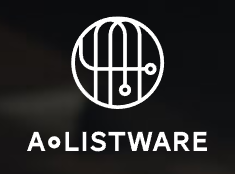In the ongoing challenge of defending against cyber threats, securing digital infrastructure and network environments remains critical. Cybersecurity assessments serve as diagnostic tools, similar to medical evaluations, identifying systemic weaknesses before issues escalate. These assessments are used to evaluate an organization’s defense capabilities and compliance status, providing the insights needed to inform effective security strategies.
Cybersecurity assessments typically include vulnerability scans, penetration testing, firewall configuration reviews, and threat simulations. Because these tasks are time-sensitive and technically complex, organizations often rely on experienced partners like A-listware to carry them out efficiently and thoroughly.
A-listware delivers structured cybersecurity assessment services that offer a clear view of an organization’s current security posture. The goal is to identify vulnerabilities, assess risk, and provide actionable recommendations that improve overall protection!
But first, let’s explore what cybersecurity assessments entail.
What Is a Cybersecurity Assessment?
Cybersecurity assessments systematically and objectively evaluate an organization’s security infrastructure, policies, processes, and practices. These evaluations are conducted by qualified cybersecurity specialists to identify vulnerabilities, assess risk exposure, and determine how effective current security controls are. The goal is to provide a clear understanding of the organization’s security posture and highlight areas for improvement.
In simple words, the primary goal of a cybersecurity assessment is to gain a comprehensive understanding of the organization’s security posture and identify areas that require improvement or enhancement to mitigate potential cyber threats effectively.

A-listware: Security Expertise in Practice
A-listware is a UK- and US-based cybersecurity and IT services provider with experience in securing digital infrastructure across industries including finance, healthcare, e-commerce, manufacturing, and telecommunications. The company delivers comprehensive cybersecurity assessment services, combining vulnerability scanning, penetration testing, infrastructure audits, and compliance reviews.
Their team includes certified ethical hackers, SIEM experts, DevSecOps engineers, audit consultants, and cloud security professionals. A-listware supports both one-time audits and ongoing managed security services. In addition to application security testing and infrastructure reviews, they assist with regulatory compliance frameworks such as HIPAA, GDPR, PCI DSS, and NIST.
Security assessments conducted by A-listware are tailored to each client’s risk profile, industry, and operational scale, with attention to emerging threats and evolving technologies. The company also provides architecture reviews, DDoS mitigation strategies, and support for mobile, cloud, and web application protection. A-listware’s security audits and recommendations are based on verified testing methodologies and regulatory benchmarks.
The Complexities Surrounding Cybersecurity Assessment
Cybersecurity assessments can be intricate and multifaceted, demanding a comprehensive understanding of various aspects. Here are some examples of the complexities involved in a cybersecurity assessment:
1. Diverse Ecosystems and Technologies
One of the primary complexities of cybersecurity assessments lies in modern enterprises’ vast and diverse technological ecosystems. Businesses often rely on interconnected devices, applications, and networks, making it challenging to identify potential vulnerabilities and security gaps across the entire infrastructure. Moreover, a thorough assessment requires expertise in various technologies, including cloud computing, IoT devices, mobile applications, and legacy systems.
2. Continuous Evolution of Threat Landscape
The cybersecurity landscape is constantly in flux, with cyber threats becoming increasingly sophisticated and stealthy. Assessments must adapt to this dynamic environment, continuously updating methodologies and tools to stay ahead of emerging threats. It demands a proactive and agile approach to identify new attack vectors and vulnerabilities, ensuring businesses remain resilient against the latest web-based adversaries.
3. Regulatory Compliance and Standards
Navigating the complexities of cybersecurity assessments involves understanding the intricate web of regulatory frameworks and industry standards. Compliance requirements, such as GDPR, CCPA, HIPAA, or industry-specific standards like PCI DSS and NIST, add a layer of difficulty to the assessment process. Failing to meet these obligations can result in severe penalties, financial losses, and reputational damage.
4. The Human Factor
In cybersecurity, humans continue to be one of the most vulnerable links, often unknowingly contributing to security breaches through social engineering attacks such as phishing and pretexting. Hence, cybersecurity assessments must thoroughly test employees’ security awareness and knowledge to reinforce the importance of best practices across the organization.
5. Scope and Depth of Cybersecurity Assessments
Determining the scope and depth of a cybersecurity assessment is an intricate task. A narrow scope may negate critical vulnerabilities, while one that’s too broad creates an overwhelming workload that hinders the focus on critical issues. Striking the right balance requires understanding each organization’s needs and risk appetite and tailoring assessments accordingly.
6. Skill and Expertise Gap
Effective cybersecurity assessments require a highly skilled and experienced team capable of thoroughly identifying and analyzing potential risks. For many organizations, working with an external cybersecurity provider helps address internal resource constraints and skills gaps, especially amid the ongoing shortage of qualified security professionals.
Importance of Cybersecurity Assessments
Cybersecurity assessments are important for many reasons. They include the following:
1. Risk Identification and Management
Cybersecurity assessments help identify gaps and weaknesses in an organization’s digital environment. By understanding these risks, businesses can take proactive measures to minimize their cyberattack exposure and prioritize resources effectively.
2. Compliance and Regulation
Many industries and jurisdictions have specific compliance requirements that organizations must adhere to. Cybersecurity assessments reveal these regulatory obligations and ensure that businesses meet them. Thus, they help reduce the risk of penalties and legal consequences.
3. Protection of Sensitive Data
Confidential customer information, proprietary data, and intellectual property are valuable assets that cybercriminals often target. To this end, these assessments help implement robust data protection strategies to safeguard critical information from unauthorized access and data breaches.
4. Business Continuity
A successful cyber attack can disrupt operations and lead to lengthy downtimes and financial losses. Cybersecurity assessments enable businesses to establish strong contingency plans to ensure continuity even during ongoing cyber attacks by identifying potential threats and weaknesses.
5. Building Trust
For modern businesses, trust is a valuable commodity. Companies can build trust with their customers, partners, and stakeholders by undergoing regular cybersecurity assessments and demonstrating a commitment to protecting their client’s data.

Components of Cybersecurity Assessments
Here are the different types of cybersecurity assessments and what they entail:
- Vulnerability Assessments: These assessments identify known security gaps in an organization’s networks, systems, and applications. Vulnerability assessments often utilize specialized scanning tools to detect weaknesses that threat actors could exploit.
- Penetration Testing: Also known as ethical hacking, penetration testing involves simulating real-world cyber attacks to evaluate an organization’s defenses. This assessment helps identify gaps and provides actionable insights to enhance security posture.
- Security Audits: These audits involve comprehensive reviews of an organization’s security policies, procedures, and controls. They help ensure that safety measures align with best practices and regulatory requirements.
- Risk Assessments: These evaluate risks that can be exploited, their likelihood, and their impact on an organization. This process helps businesses prioritize their security efforts and allocate resources effectively.

A-listware’s Cybersecurity Assessment Services
A-listware provides a comprehensive suite of cybersecurity assessment services designed to help organizations identify vulnerabilities, assess risks, and align their security infrastructure with both operational needs and regulatory requirements. These assessments are conducted using verified testing methods and are tailored to each client’s technology stack, industry, and security maturity level;
1. Vulnerability Assessment
A-listware conducts systematic vulnerability assessments across networks, servers, applications, and databases. Using up-to-date scanning tools and structured analysis, the team identifies and prioritizes weaknesses that could be exploited by threat actors. Each assessment results in a remediation roadmap, offering technical recommendations based on severity, exposure, and business impact. These evaluations are continuously updated to reflect emerging vulnerabilities and changes in the client’s environment.
2. Risk Assessment
Risk assessments performed by A-listware examine the probability and potential impact of threats across the IT landscape. This includes evaluating existing controls, identifying critical assets, and mapping risk scenarios to organizational processes. Based on this analysis, A-listware provides detailed recommendations to reduce exposure, enhance incident response preparedness, and prioritize mitigation efforts in line with business objectives and risk appetite.
3. Security Architecture Review
A-listware offers full-spectrum reviews of existing security architecture covering physical and virtual infrastructure, remote access, identity management systems, and data flow controls. This includes evaluating firewall configurations, endpoint security, intrusion prevention systems (IPS), and DLP mechanisms. The objective is to identify design-level gaps and optimize security frameworks for resilience and scalability. The output includes actionable insights for reinforcing infrastructure against modern attack vectors.
4. Compliance Assessment
To support regulatory alignment, A-listware conducts compliance assessments against major standards and industry-specific frameworks such as HIPAA, GDPR, PCI DSS, NIST, and CCPA. These services involve auditing internal policies, reviewing access controls, evaluating encryption protocols, and mapping current security practices to required controls. Deliverables include compliance checklists, remediation plans, and documentation needed for audit readiness and certification processes.
Why Choose A-listware for Security Assessments?
A-listware combines deep technical specialization with cross-industry cybersecurity experience to deliver assessments that are both comprehensive and adaptable. The company’s approach is grounded in practical knowledge of enterprise security operations, with a focus on clarity, accuracy, and measurable outcomes.
1. Invaluable Expertise
A-listware’s cybersecurity teams include specialists in SIEM, DevSecOps, ethical hacking, and cloud security. They bring extensive experience in assessing complex IT environments, including hybrid cloud infrastructures, IoT systems, and legacy technologies. This expertise supports nuanced evaluations that go beyond surface-level scanning.
2. Customized Assessment Frameworks
Rather than offering generic packages, A-listware builds tailored assessment scopes based on organizational size, sector, technical stack, and compliance exposure. This ensures that the results are directly applicable and relevant to each client’s operational context, rather than abstract or overly broad.
3. Full Ecosystem Analysis
Security assessments from A-listware encompass more than just endpoints or networks. They extend into applications, APIs, user behavior, third-party dependencies, and cloud workloads. This holistic approach ensures weak points across the full technology stack are addressed in coordination with internal teams.
4. Emphasis on Prevention and Early Detection
A-listware prioritizes early-stage threat detection through proactive simulations, penetration testing, and log analysis. These tools are applied to identify exploitable paths before they can be used in real attacks. Combined with regular vulnerability and risk reviews, this helps organizations stay ahead of evolving threats and reduce dwell time in case of incidents.
So what are you waiting for? Take your security to the next level with A-listware today!


